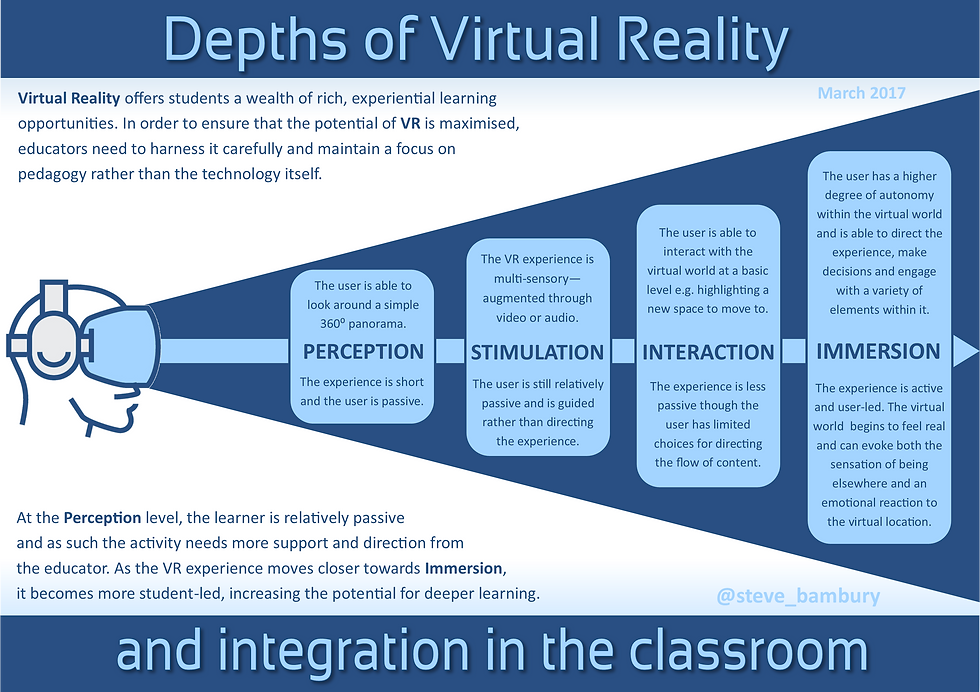
In March 2017 I published my model for VR in Education, detailing the various depths of VR and how they can be harnessed in classrooms. The model has been incredibly well received and has been shared at conferences and institutions around the world. I would like to thank everyone who has shared it as well as all those who have given me feedback on it. Below the image, you will find a more in depth analysis of the theory behind the model.

Why I created the model
In January 2017 I started to notice how often VR developers used the term "immersive" to describe their apps. Having finally got my HTC Vive around this time, I had come to understand a whole new meaning for immersion and begun playing around with ideas for a model to categorise and differentiate between the different virtual reality experiences available to students and educators.
Did the model always have four levels?
No, it went through several iterations over a period of about three months of development. At first I was working around a concept with three levels. Below is a glimpse of the original version (which I've never shared before!)
This version didn't sit right with me though and I began trying to tease apart the middle level as I felt it encompassed too broad a spectrum of experiences. Ultimately this led to the four levels that the final version utilises:
Perception
This basic level is where most schools that are exploring VR are working right now - mostly due to logistics, economics and the availability of the technology. Essentially this level refers to the use of 360 images as the extent of the virtual experience. There is nothing wrong with this though! It is just essential that the experience is supported and framed by well-considered pedagogy so that it becomes more than a gimmick.
Example: 360 Cities
Stimulation
The step above Perception is where I see 360 videos and simple experiences that utilise audio alongside 360 content. The same rule regarding the scaffolding of the experience with great pedagogy applies.
Example: GoPro VR
Interaction
This was the hardest level for me to define but I eventually settled on the concept of Interaction. This level forms a bridge between the simpler, less-autonomous experiences of the levels below and truly immersive experiences. The user has some degree of control here. An example of this would be users being able to navigate around an experience using a point and click interface to reach different areas of POVs.
Example: HistoryView VR
Immersion
Sometimes referred to as "Presence." This is the zenith of VR - true immersion and it cannot be achieved using the simple headsets that are currently being used more broadly in schools. Essentially the Immersion level is where the user gains full autonomy and is able to make choices and create content within a virtual space. Multiple senses are engaged and an emotional reaction is possible.
Example: Google Tilt Brush
_edited.png)